Are you interested in knowing the secrets to growing potatoes successfully? Look no further. In this article, we will provide you with essential insights and tips to help you produce abundant harvests.
We will also cover everything from selecting a suitable variety to proper planting techniques and maintenance. Get ready to unlock the secrets of homegrown potatoes like a pro.
Contents
Best Time to Plant Potatoes
The best time to plant potatoes is typically in early spring, after the last frost date for your region. Potatoes prefer cool soil temperatures between 45°F and 55°F (7°C and 13°C) for optimal growth. For best results, they require well-draining soil with a pH of around 5.8 to 6.5.
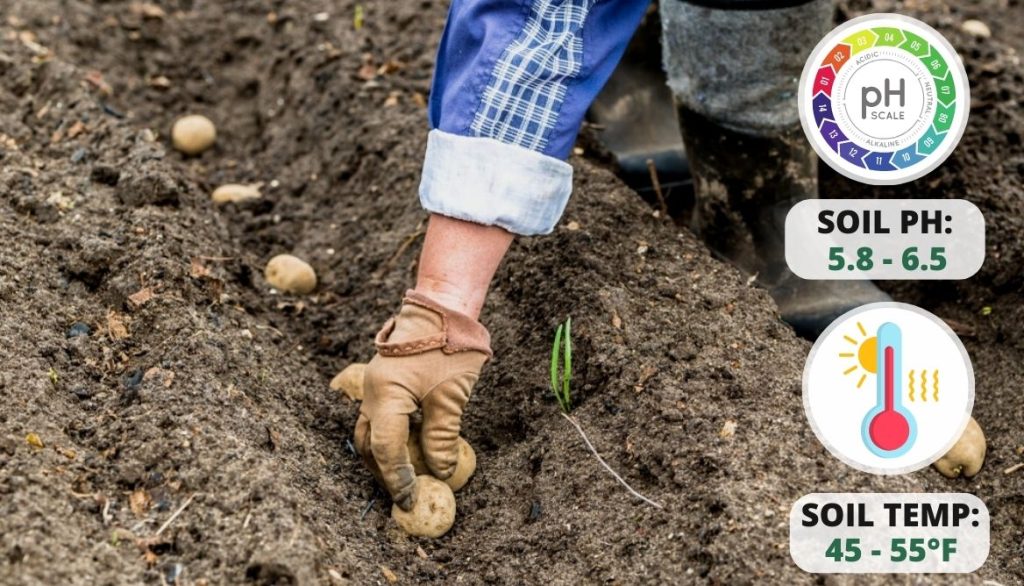
4 Highly Effective Methods to Successful Plant Potatoes
Planting potatoes can be done using various methods, depending on your available space and preferences. Here are four popular ways to plant potatoes:
1. A Guide to Efficient and Effective Hole Digging
Digging holes provides an ideal environment for tuber growth and ensures successful cultivation. Below are methods of digging holes for planting potatoes:
- Start by preparing your garden soil. Loosen about 8 to 10 inches of soil and remove any weeds or rocks.
- Dig individual holes in the prepared soil, spaced about 12 to 15 inches apart, in rows around 2 to 3 feet apart.
- Place seed potatoes (potatoes with green sprouts) into the holes with the nodes facing upward.
- Cover the potatoes with about 3 to 4 inches of soil.
- As the plants grow, gradually mound soil around the base of the plants to encourage tuber development and protect the growing potatoes from sunlight.
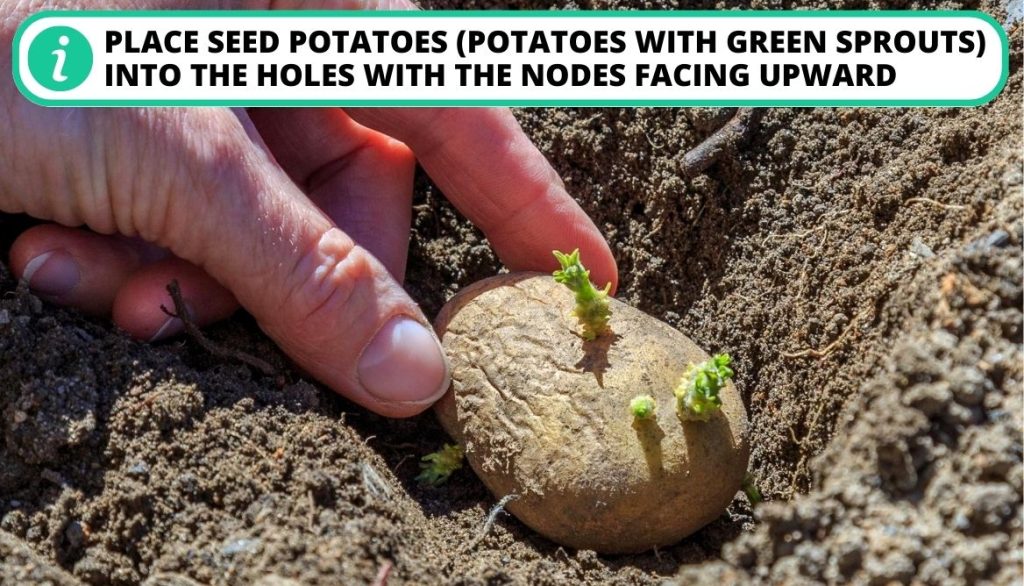
2. Mastering V-Shaped Trench Digging: A Guide to Efficient and Effective Trenching for Planting
Below is how to dig v-shaped trenches:
- Prepare your soil by loosening it to about 8 to 10 inches deep and removing any weeds or rocks.
- Dig V-shaped trenches in the prepared soil, with the trench depth around 6 to 8 inches and width around 8 to 10 inches.
- Place potato seeds into the bottom of the trenches, spacing them about 12 to 15 inches apart.
- Cover the potatoes with a layer of soil, filling the trenches halfway.
- As the potato plants grow, gradually add soil to the trenches, covering the potato stems and leaving only the top leaves exposed.
3. Straw Planting Techniques: Maximizing Potato Growth with Straw
Let’s look at how to plant in straws below:
- Lay a thick straw mulch or hay directly on the ground where you want to plant the potatoes. This helps to conserve moisture and suppress weed growth.
- Place seed potato on the straw about 12 to 15 inches apart.
- Cover the seed potatoes with another layer of straw, around 6 to 8 inches thick.
- Water the straw thoroughly, ensuring the potatoes receive adequate moisture.
- As the potatoes grow, continue adding more straw around the stems to support and protect the tubers from exposure to sunlight.
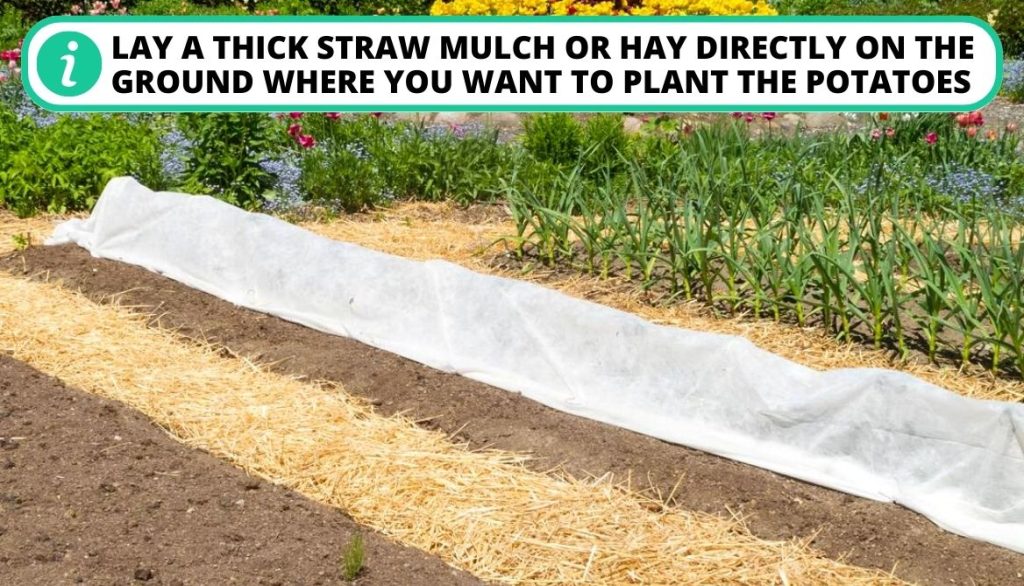
4. Growing Potatoes with Success in Pots
Below is how to plant potatoes in containers or pots:
- Choose large containers or pots with drainage holes. The pot size will depend on the number of potatoes you want to plant.
- Fill the pots with a well-draining potting mix, leaving about 4 inches of space from the top rim of the container.
- Place seed potato on top of the potting mix, ensuring they are spaced appropriately based on the variety’s requirements.
- Cover the potatoes with another layer of potting mix, leaving a couple of inches of space from the pot’s rim.
- Water the pots thoroughly, ensuring the soil is evenly moist but not soggy.
- Place the pots in a sunny location and water regularly, ensuring the soil doesn’t dry out completely.
15 Secrets to Growing Seed Potatoes
To ensure successful potato growth, here are some secrets and essential practices to follow:
1. Planting at Appropriate Time
Potatoes thrive in cooler weather, so it’s essential to plant them at the right time.
- Avoid planting potatoes too early in the spring when the soil is still cold and wet, as it can lead to poor germination and rotting.
- Similarly, avoid planting potatoes too late in the season when the temperatures are too high, as it can affect tuber development.
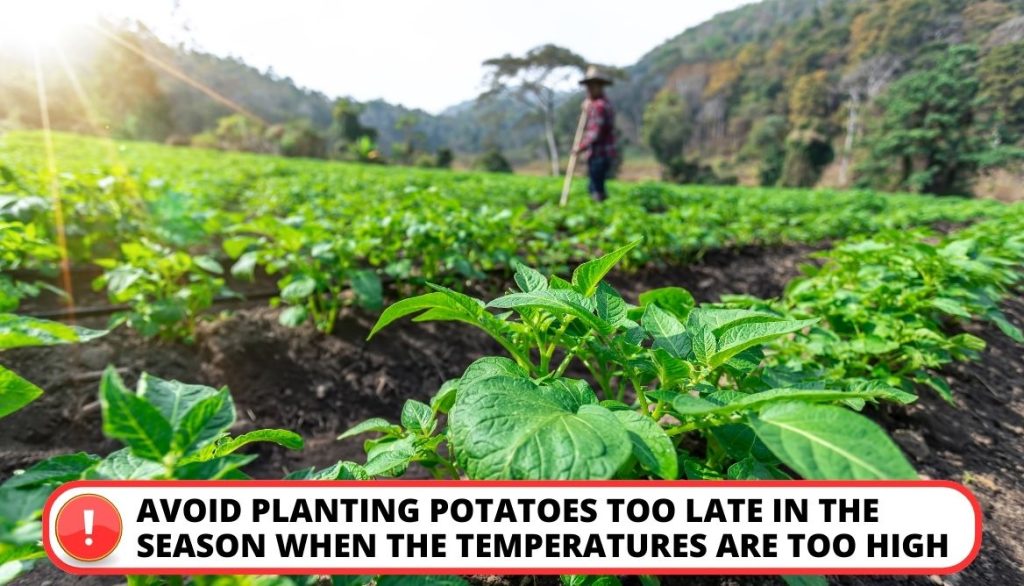
2. Avoid Planting Afflicted or Ailing Seed Potatoes
Using infected or diseased seed potatoes can introduce diseases into your garden and significantly impact your potato crop. Always purchase certified disease-free seed potatoes from reputable sources.
3. Chit Seed Before Planting
Chitting refers to the process of allowing seed potatoes to sprout before planting.
- Placing the seed potato in a cool, well-lit area for a few weeks encourages the development of sturdy sprouts.
- This helps jumpstart growth when planted, leading to earlier and more potatoes.
4. Prevent Soil Compaction
Compacted soil restricts root growth and makes it difficult for potatoes to develop correctly.
- Avoid walking or working in the potato bed when the ground is wet, as this can cause compaction.
- Use raised beds or loosen the soil with a fork or tiller before planting to improve aeration and drainage.
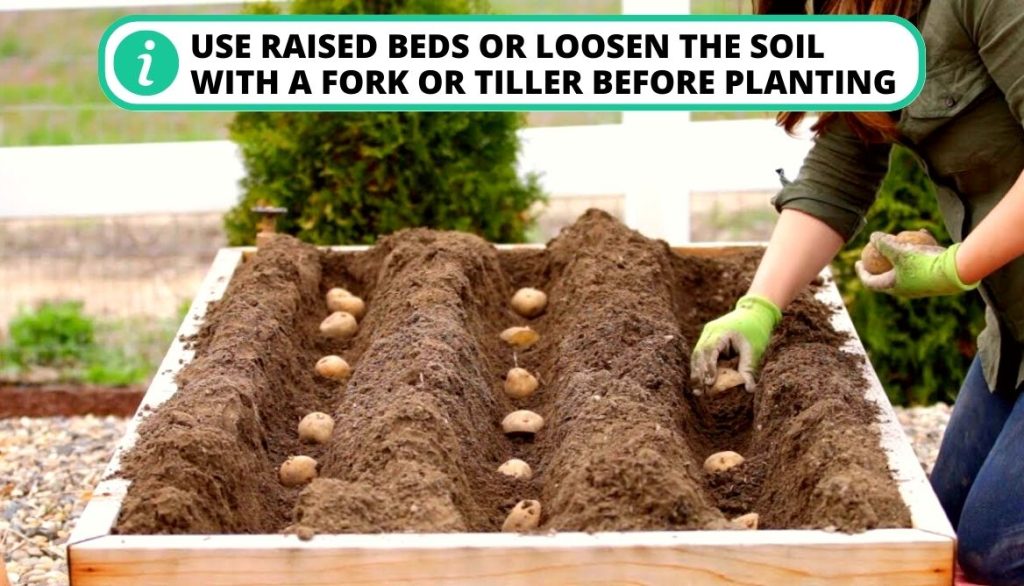
5. Ensure Good Drainage
Potatoes prefer well-drained soil to prevent waterlogging, which can lead to rot and disease.
- Choose a location with good natural drainage or improve drainage by adding organic matter like compost.
- Raised beds can also help improve drainage.
6. Loamy Soil Type and Correct pH
Potatoes thrive in loamy soil with a balanced combination of sand, silt, and clay.
- Loam soil provides good drainage while retaining sufficient moisture and nutrients.
- Additionally, ensure the soil pH is between 5.0 and 6.0, which is slightly acidic.
7. Apply Enough Fertilizer
Potatoes are heavy feeders and require adequate nutrition to grow well.
- To provide essential nutrients before planting, incorporate well-balanced organic fertilizer or compost into the soil.
- During the growing season, supplement with additional fertilizers rich in potassium and phosphorus to support tuber development.
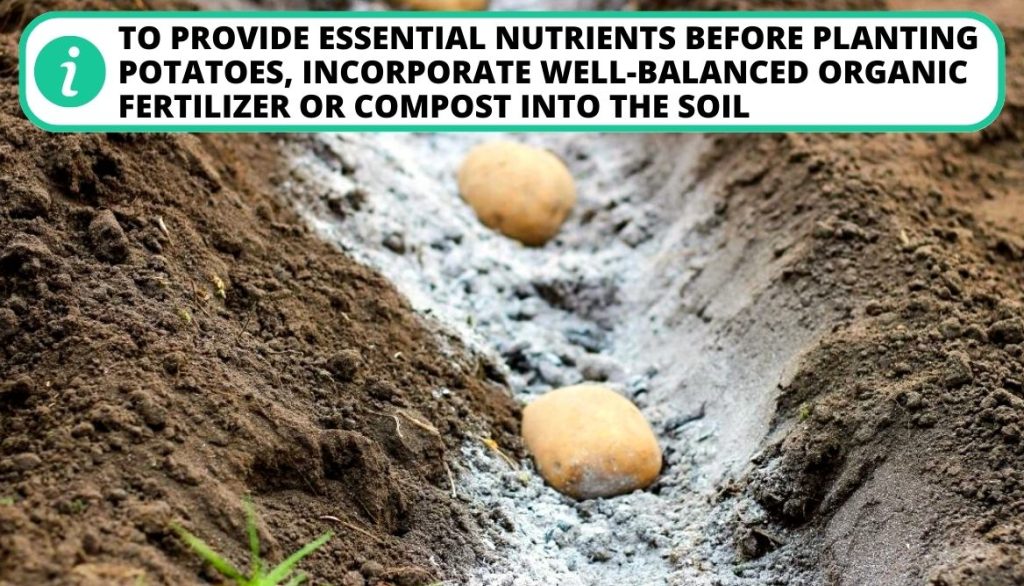
8. Failing to Maintain Proper Soil Cover
Hilling or mounding soil around the base of potato plants is essential to encourage tuber development and protect potato tubers from sunlight. Neglecting to the hill can make the baby potatoes turn green and green potato can cause illness when consumed.
9. Watering Potatoes
Consistent watering is essential for proper potato growth. Keep the soil evenly moist but not soggy.
- Water deeply once or twice a week, providing about 1-2 inches per week, depending on the weather conditions.
- Irrigate directly at the soil level to prevent wetting the foliage, which can lead to diseases.
10. Provide Plenty of Light
Potatoes require ample sunlight to grow and produce a good yield. Choose a sunny location for your potato bed, as they need at least six to eight hours of direct sunlight daily.
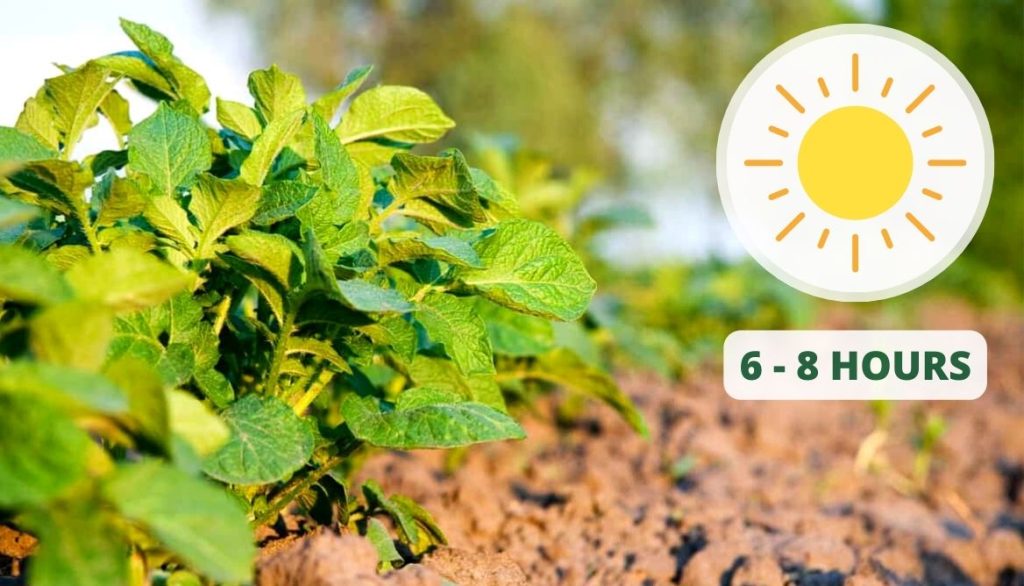
11. Remove Weeds
Weeds compete with potatoes for nutrients, water, and light, and can hinder their growth. Regularly remove weeds by hand or use mulch to suppress their growth.
12. Keep Plants from Disease and Pest Free
Monitor your potato plants regularly for signs of pests and diseases. Common potato diseases include:
- Potato Blight
- Potato scab
- Viruses.
To prevent or manage these issues, practice crop rotation, choose disease-resistant varieties, and use organic fungicides if necessary.
Similarly, protect your plants by employing organic pest control methods from pests like:
- Aphids
- Colorado potato beetles
- Wireworms.
13. Let the Potato Plant Mature Fully Before Harvesting
Harvesting potatoes at the right time is crucial. Harvesting too early can result in small potato tubers while leaving them in the ground for too long can lead to grown potatoes that may have reduced quality.
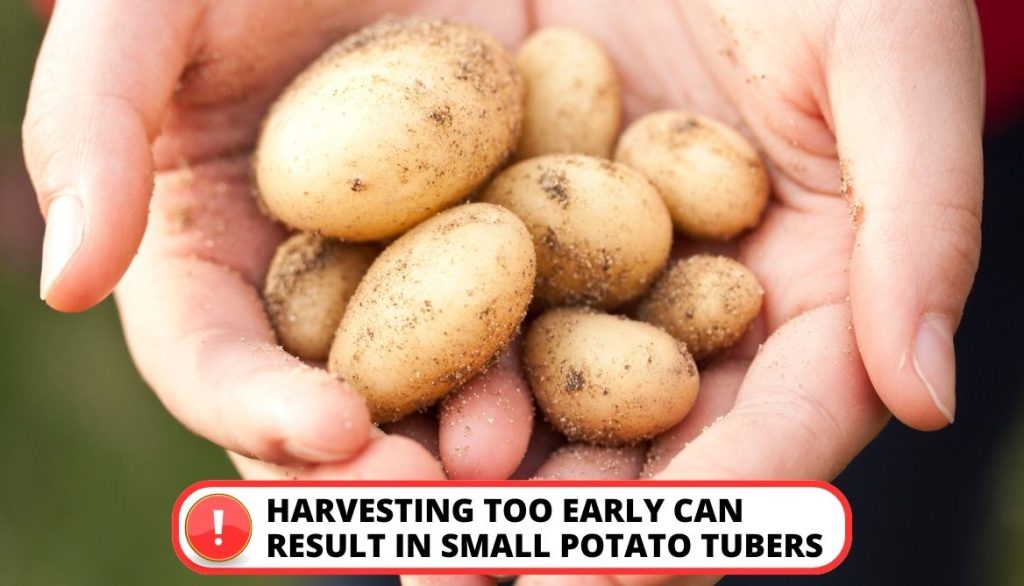
Refer to the specific variety’s recommended days to maturity and look for visual cues like yellowing foliage before harvesting.
14. Harvest Potatoes in Dry Weather
Harvesting potatoes when the weather is dry is beneficial for several reasons.
- Dry conditions allow the soil to be more easily worked, reducing the chance of damaging the potato tubers.
- It also helps prevent the spread of soil-borne diseases.
- Additionally, dry weather facilitates the drying of the harvested potatoes, reducing the risk of rot during storage.
15. Proper Storage and Preservation
After harvesting, storing potatoes properly is essential to prevent them from sprouting, rotting, or developing diseases. Also, Grocery store potatoes that have undergone sprout-retardant treatment are unsuitable for planting in a garden or agricultural setting.
Expert Tips for Timely Harvesting Potatoes After Growth
When it comes to knowing when to dig up fresh potatoes after they have grown, there are a few key indicators to consider. Here are some tips to help you determine the right time:
1. Using Foliage as a Guide for Harvesting Potatoes
Keep an eye on the potato plant’s foliage as it matures. Once the plants have flowered and the foliage starts to yellow and die back, the potatoes are nearing maturity. Depending on the variety, this typically happens around 70 to 90 days after planting.
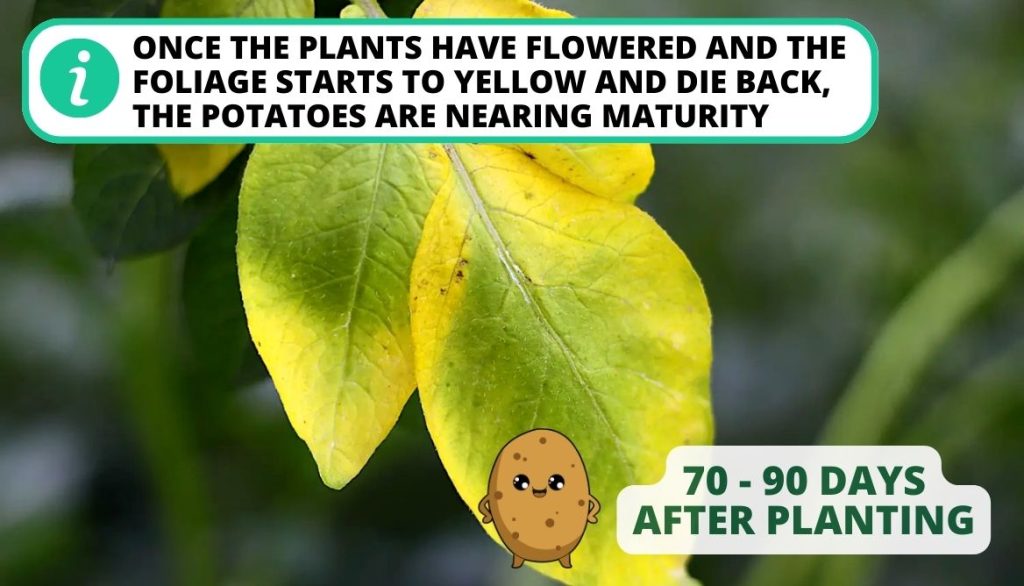
2. Gauging Tuber Dimensions
Dig up a potato or two from different parts of the potato plant to assess their size.
- Generally, new potatoes can be harvested when they are about the size of an egg.
- If you prefer larger, mature potatoes wait until they reach the desired size.
- This can range from a few inches in diameter for “new potatoes” to larger sizes for full-sized storage potatoes.
3. Performing a Sample Excavation
If you’re unsure about the readiness of your potatoes, you can perform a “sample dig.”
- Carefully dig around the base of the plant and unearth fewer potatoes to inspect their size and skin development.
- If they appear mature and have thin, papery skin, it’s likely time to harvest the rest of the potato crops.
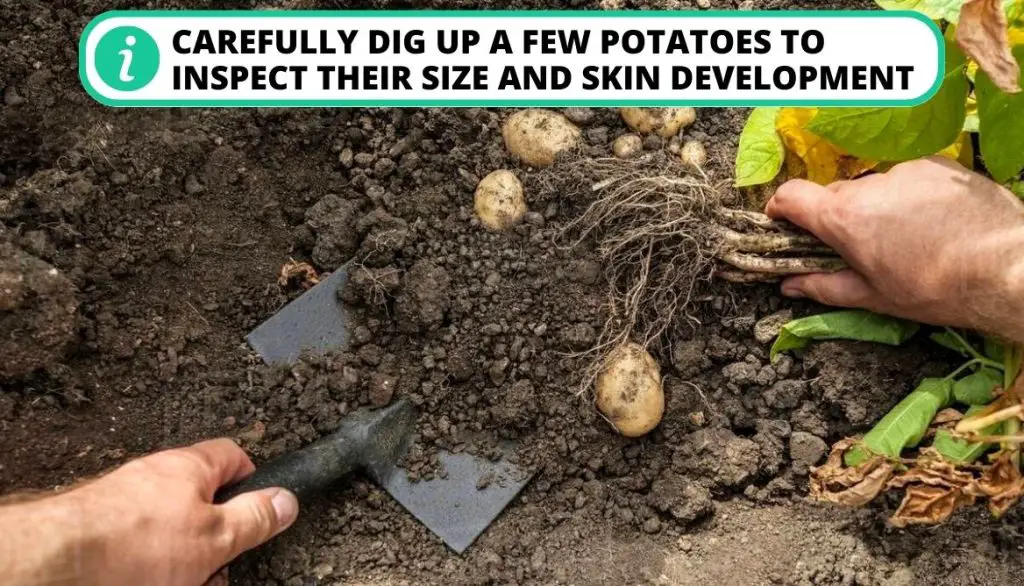
4. Taking Potato Variety into Account
Different potato varieties have varying maturation times.
- Early types tend to mature quicker, while maincrop varieties take longer.
- Refer to the information provided by the seed supplier or consult reliable gardening resources for specific details about your chosen type.
5. Evaluating the Weather and Growing Conditions
Unfavorable weather, such as excessive rainfall or prolonged high temperatures, can impact the potato harvest.
- It’s better to dig up potatoes earlier to prevent rotting in wet conditions.
- Whereas dry conditions may warrant leaving the potatoes in the ground a little longer to bulk up.
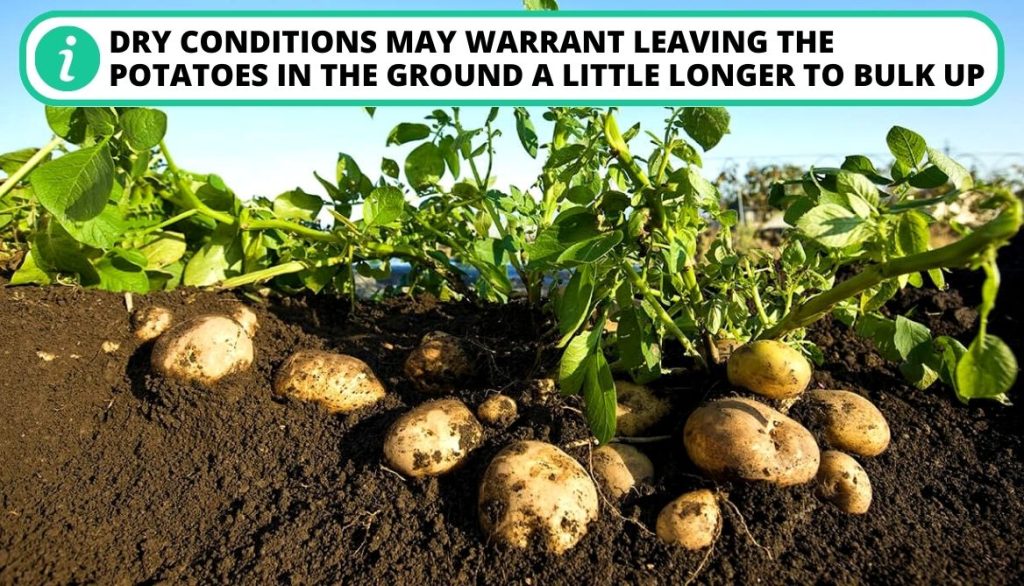
6. Catering to Individual Taste: Considering Personal Preferences
Lastly, your personal preference also plays a role. If you enjoy the taste of “new potatoes” or prefer smaller sizes, you can harvest them earlier.
On the other hand, if you prefer fully matured potatoes for storage, wait until they reach the desired size and the foliage has completely died back.
FAQ
How do you make potatoes grow better?
To improve potato growth, provide sufficient sunlight and water while maintaining well-drained soil with ample organic matter.
What is the best miracle grow for potatoes?
Miracle-Gro® Performance Organics® All Purpose Plant Nutrition is an excellent choice for growing potatoes, providing essential nutrients for healthy plant growth. Alternatively, Miracle-Gro® Water Soluble Tomato Plant Food can also be effective for potatoes due to its balanced formula and focus on promoting robust root development.
How long do seed potatoes start to grow
Seed potatoes typically start to grow within 2 to 3 weeks after planting, given the right conditions and care.
How can I get my potatoes to sprout faster?
Store the potatoes in a warm and well-lit area to encourage faster potato sprouting. Provide ample moisture by lightly misting the potatoes or placing them in a damp paper towel. Additionally, choose seed potatoes with visible “eyes” or sprouts to expedite the process.
What is the best position to grow potatoes?
The best position to grow potatoes is in a sunny area that receives at least six hours of direct sunlight daily. Potatoes thrive in well-drained soil, so choosing a location with good drainage is essential. Additionally, providing a slightly acidic soil pH between 5.0 and 6.0 is beneficial for optimal potato growth.
What time is best to grow potatoes?
Potatoes are best grown in spring when the soil temperature reaches around 45 to 50 degrees Fahrenheit. The ideal time for planting potatoes is typically between March and May, depending on your location. Ensuring the soil is well-drained, and the potato varieties are chosen to suit your climate is essential.
Conclusion
The secrets to growing potatoes can significantly enhance your success and yield when cultivating this versatile and nutritious crop. This is essential to understand the highlights like selecting the right potato varieties, providing adequate sunlight and soil conditions, and implementing proper watering and fertilization techniques.
This ensures optimal growth, maximizes yields and enjoys a bountiful harvest. So, what are some unique challenges you have faced while growing potatoes? Share in the comment section below.
- How to Get Potatoes to Sprout Eyes: Detailed Growing Guide with 3 Options - July 31, 2023
- Weight of a Medium Potato: Revealed in Detailed Guide - July 29, 2023
- Maris Piper Potatoes: 9 Substitutes You Should Know About - July 27, 2023
Hello! I’m Jessica Zander, a garden coach and consultant based in the Boston area (zone 6b), offering virtual consultations across the country and Canada.
I’ve been passionate about gardening since the early 1990s, and in 2022, I launched You Can Do It Gardening to empower individuals to feel more confident in their gardening endeavors.
Following a 30-year career in nonprofit finance and operations, I transitioned out of that field in mid-June of 2023 due to the growing demand for coaching services. Interestingly, my years of presenting financial statements to boards and finance committees proved to be valuable experience for teaching people about gardening! I enjoy sharing skills, providing guidance and suggestions, and collaborating efficiently with clients to make significant improvements to their outdoor spaces, both small and large. I also regularly teach at the Arlington Continuing Education and Cambridge Adult Education.
My approach is direct and practical, akin to Mary Poppins, but tailored to your garden. Clients find satisfaction in saving money and taking pride in their own gardening achievements.

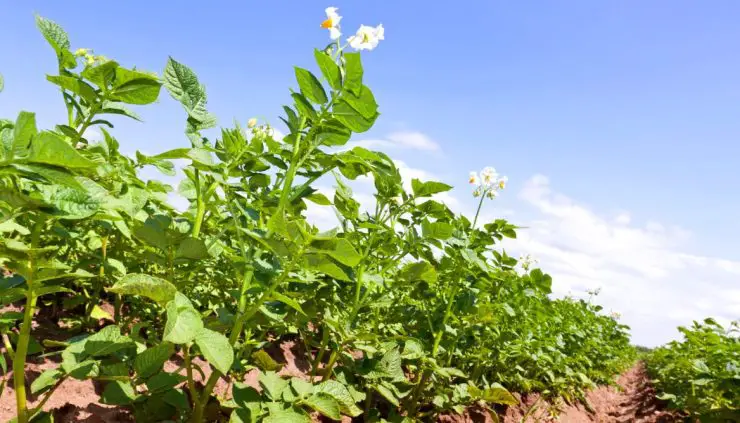
Add comment